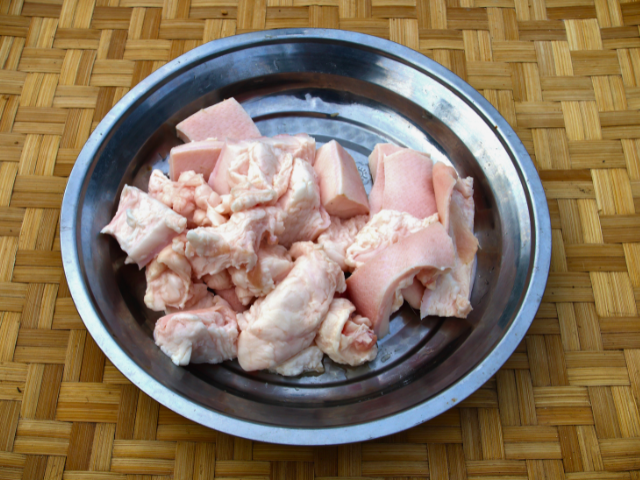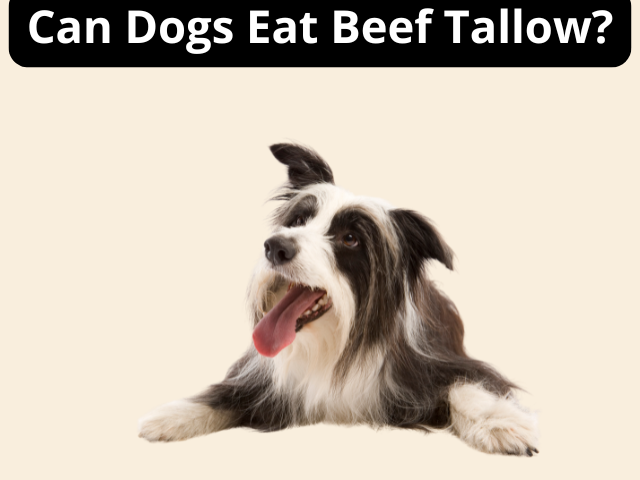Rendered fat from beef can provide several health benefits for our furry friends. It is rich in healthy fats, vitamins, and minerals.
Yet, like any food, beef tallow comes with risks. Some dogs may have allergies or sensitivities to it. Overconsumption can lead to weight gain or digestive issues.
What Exactly Is Beef Tallow?
Beef tallow is a type of fat derived from cows. It is gaining attention for its potential benefits for dogs. Understanding its source and composition helps in making informed choices.
Source And Rendering Process
Beef tallow comes from the fat of cattle. It is typically obtained from specific cuts, like the kidney and surrounding areas. The process of rendering turns solid fat into a usable form. Here’s how it works:
- Collection: Fat from cows is collected after the animal is processed.
- Trimming: Any meat or impurities are trimmed away to ensure purity.
- Heating: The fat is heated slowly. This melts the fat and separates it from any remaining solids.
- Straining: The melted fat is strained to remove solid particles.
- Cooling: Once cooled, the tallow solidifies into a creamy texture.
This rendering process is crucial. It ensures that the tallow is safe for use in cooking or as an ingredient in pet food.
Primary Fatty Acid Composition
The fatty acid composition of beef tallow is essential for understanding its benefits. Tallow primarily consists of saturated and monounsaturated fats. Here’s a breakdown:
| Fatty Acid | Percentage |
|---|---|
| Palmitic Acid | 25% |
| Stearic Acid | 14% |
| Oleic Acid | 40% |
| Linoleic Acid | 3% |
Saturated fats are important for energy. They also support skin and coat health in dogs. Monounsaturated fats, like oleic acid, promote heart health and reduce inflammation.
Is Beef Tallow Safe For Dogs? Examining The Fat Content
Beef tallow is gaining popularity as a supplement for dogs. It is rich in fat and offers some benefits. But is beef tallow safe for dogs? Examining the fat content reveals important information.

Saturated Fat And Its Impact On Dogs
Saturated fat is a major component of beef tallow. Dogs need fat for energy and healthy skin. However, too much saturated fat can lead to health issues.
- Saturated fat can raise cholesterol levels.
- High cholesterol may lead to heart problems.
- Excessive intake can cause inflammation.
It is essential to monitor the amount of saturated fat in your dog’s diet. Here’s a quick comparison of fat types:
| Fat Type | Source | Impact on Dogs |
|---|---|---|
| Saturated Fat | Beef Tallow | May increase cholesterol |
| Monounsaturated Fat | Olive Oil | Good for heart health |
| Polyunsaturated Fat | Fish Oil | Supports skin and coat |
Consult a vet before adding beef tallow to your dog’s diet. Each dog is different and has unique needs.
Link To Weight Gain And Obesity
Beef tallow is high in calories. This can lead to weight gain if not managed properly. Obesity is a major concern for many dogs today.
Extra weight can cause various health issues:
- Joint problems
- Diabetes
- Shortened lifespan
To prevent weight gain:
- Calculate your dog’s daily caloric needs.
- Factor in the calories from beef tallow.
- Maintain a balanced diet with proper portions.
Regular exercise is also essential. Keep your dog active to help manage weight.
Potential Risks Of Feeding Beef Tallow To Dogs
Understanding these risks is important for pet owners. This section focuses on the potential risks of feeding beef tallow to dogs.
Gastrointestinal Upset
Feeding beef tallow to dogs can lead to gastrointestinal upset. This includes symptoms like diarrhea and vomiting. Dogs’ stomachs can be sensitive to high-fat foods.
Signs of gastrointestinal upset include:
- Loose stools
- Frequent trips outside
- Vomiting
- Lethargy
In severe cases, gastrointestinal issues can lead to dehydration. This condition can be serious and requires veterinary care.
Pancreatitis Risk
Pancreatitis is a serious condition that affects the pancreas. Dogs that consume high-fat foods are at risk. Beef tallow is very high in fat, increasing this risk. Some dog breeds are more prone to pancreatitis.
Breeds at higher risk include:
- Miniature Schnauzers
- Yorkshire Terriers
- Poodles
- Beagles
Symptoms of pancreatitis can include:
- Abdominal pain
- Loss of appetite
- Diarrhea
- Vomiting
- Fever
In severe cases, pancreatitis can lead to hospitalization. It can be life-threatening. Always consult a vet before adding high-fat foods like beef tallow to your dog’s diet.

Potential For Increased Cholesterol Levels
Long-term feeding of beef tallow can raise cholesterol levels in dogs. High cholesterol can lead to other health problems. These problems include obesity and heart disease.
Some signs of high cholesterol may be:
- Weight gain
- Low energy
- Skin issues
Regular vet check-ups are important. They can monitor cholesterol and overall health. Consider switching to lower-fat options if cholesterol levels are high. A balanced diet is key for your dog’s health.
Here’s a simple comparison of fat sources:
| Fat Source | Cholesterol Level | Potential Risks |
|---|---|---|
| Beef Tallow | High | Obesity, Heart disease |
| Poultry Fat | Moderate | Lower risk |
| Fish Oil | Low | Healthier option |
Choose fat sources wisely. Always prioritize your dog’s health.
Are There Any Potential Benefits Of Beef Tallow For Dogs?
Understanding these benefits can help make informed choices for your furry friend. This section explores the possible advantages of beef tallow for dogs, focusing on energy, taste, and vitamins.
Source Of Energy
Beef tallow is a rich source of calories. It provides a concentrated energy source for dogs. This can be especially useful for active dogs or those needing extra energy. Here are some key points:
- High in fat content, offering dense calories.
- Good for working dogs or those with high energy needs.
- Can support weight gain in underweight dogs.
The calorie content in beef tallow is significant. It can contribute to your dog’s overall energy intake. Here’s a simple comparison of energy sources:
| Food Source | Calories per 100g |
|---|---|
| Beef Tallow | 900 calories |
| Chicken (cooked) | 239 calories |
| Rice (cooked) | 130 calories |
Due to its high-calorie nature, beef tallow can be beneficial for dogs needing extra fuel. Always consult a vet before making changes to your dog’s diet. Balance is key.
Palatability Enhancement
Some dogs can be picky eaters. They may refuse to eat their food. Beef tallow can help improve the taste of dog food. Adding a small amount can make meals more appealing. Here’s why it works:
- Rich flavor that dogs find irresistible.
- Improves texture and moisture in dry food.
- Encourages healthy eating habits in finicky dogs.
Mixing beef tallow into regular meals can enhance palatability. It may help dogs finish their food. This is especially useful for:
- Dogs recovering from illness.
- Older dogs with decreased appetite.
- Dogs stressed by changes in their environment.
Always start with a small amount to see how your dog reacts. Observe for any digestive upset. A little can go a long way in making mealtime enjoyable.
Contains Fat-soluble Vitamins
Beef tallow contains minimal amounts of fat-soluble vitamins. These vitamins include A, D, E, and K. While not a primary source of these nutrients, they contribute to overall health. Here’s a brief overview:
- Vitamin A: Supports vision and skin health.
- Vitamin D: Aids in calcium absorption for strong bones.
- Vitamin E: Acts as an antioxidant, promoting healthy cells.
- Vitamin K: Important for blood clotting and bone health.
The amounts in beef tallow are not sufficient as a sole source. However, incorporating it into a balanced diet can help provide these nutrients.
How Much Beef Tallow Is Too Much For A Dog?
This section will discuss safe quantities, considering size, activity level, and the importance of moderation.
Considerations Based On Size And Activity Level
Every dog is unique. Size and activity level play a big role in how much beef tallow is appropriate. Generally, larger dogs can handle more fat than smaller breeds.
Here are some guidelines based on size:
- Small Dogs (up to 20 lbs): 1 teaspoon per day
- Medium Dogs (21-50 lbs): 1 to 2 tablespoons per day
- Large Dogs (51-100 lbs): 2 to 3 tablespoons per day
- Extra-Large Dogs (over 100 lbs): 3 to 4 tablespoons per day
Always watch your dog for signs of digestive upset. Adjust the amount if needed.


